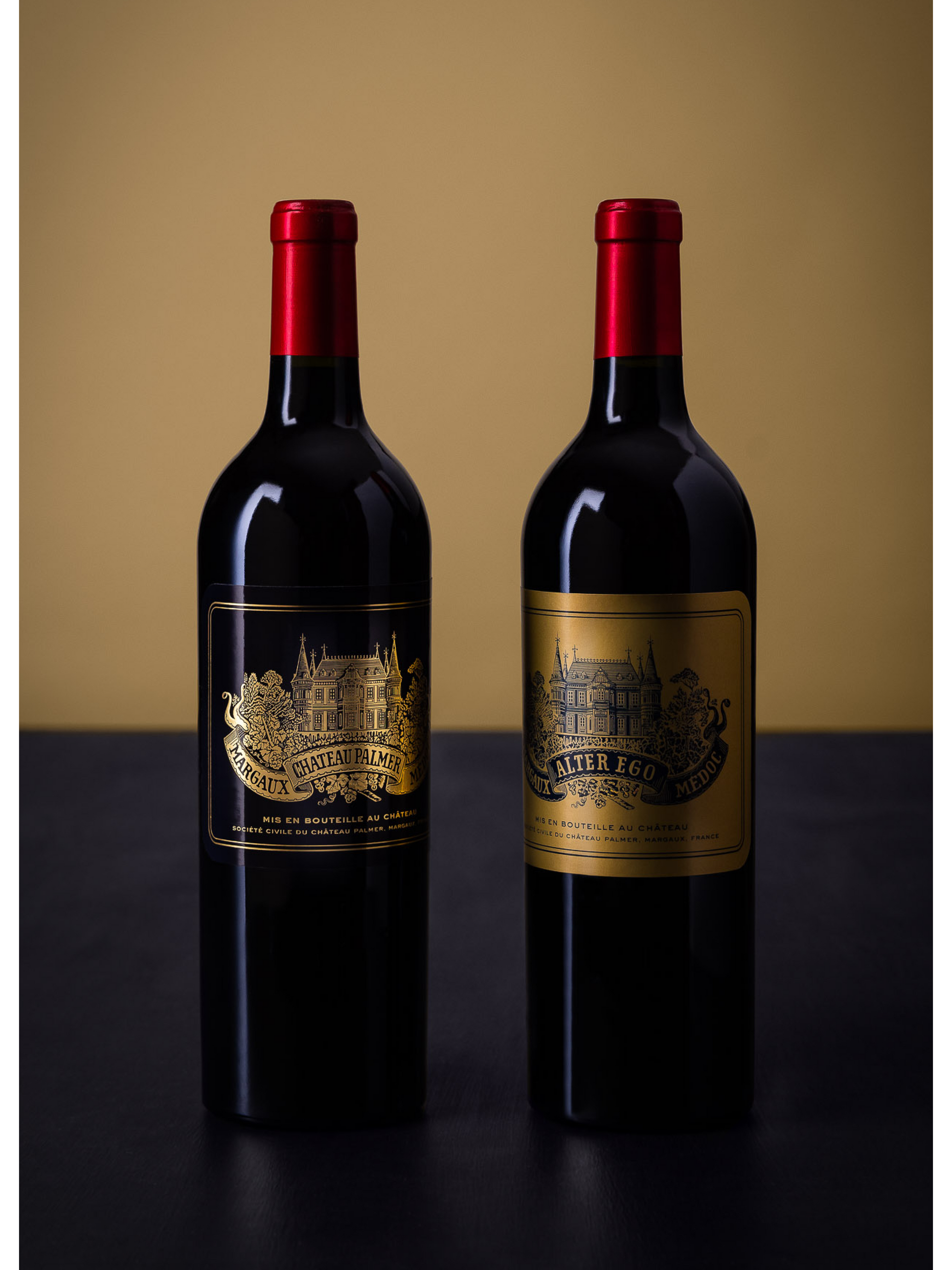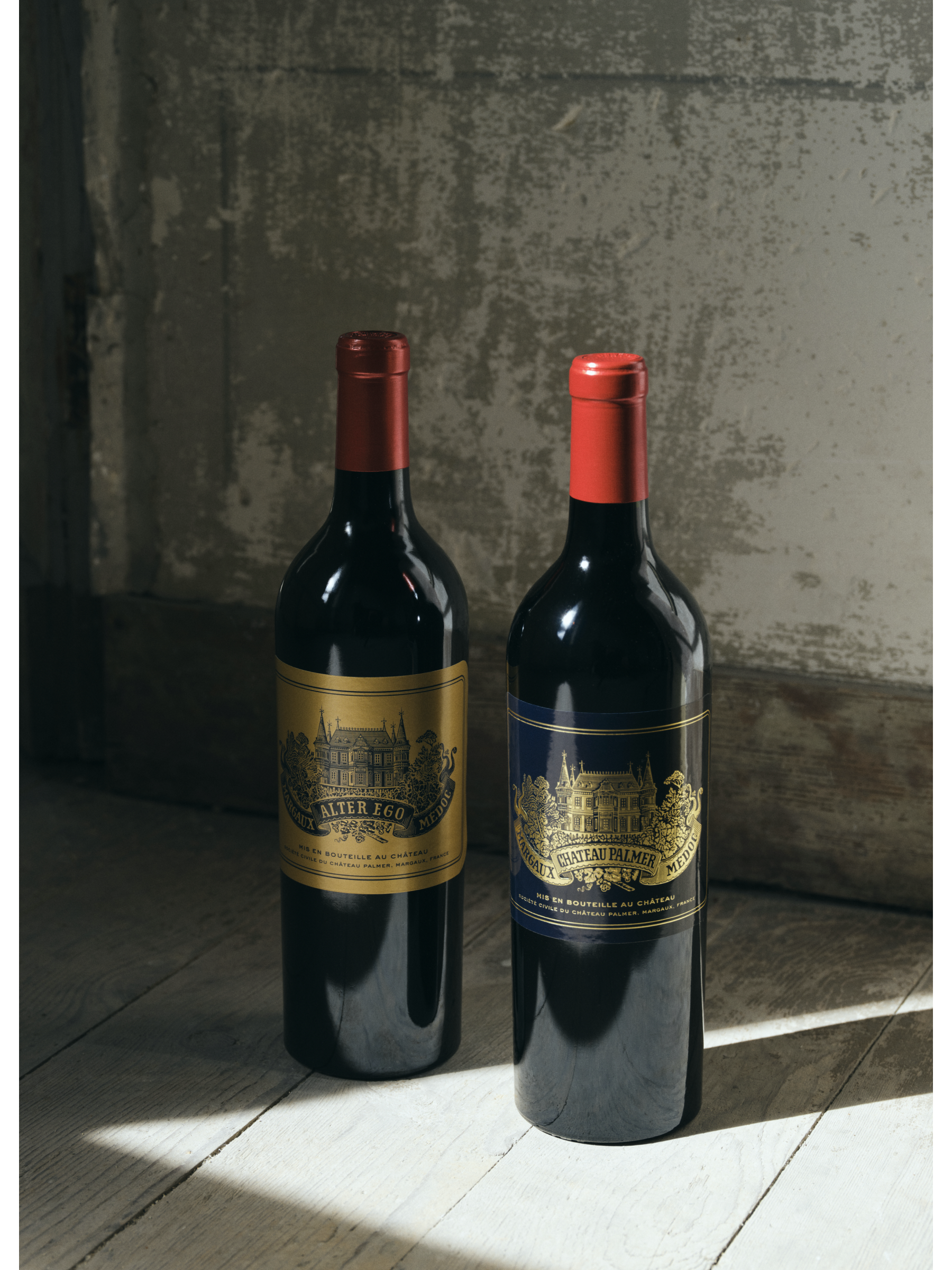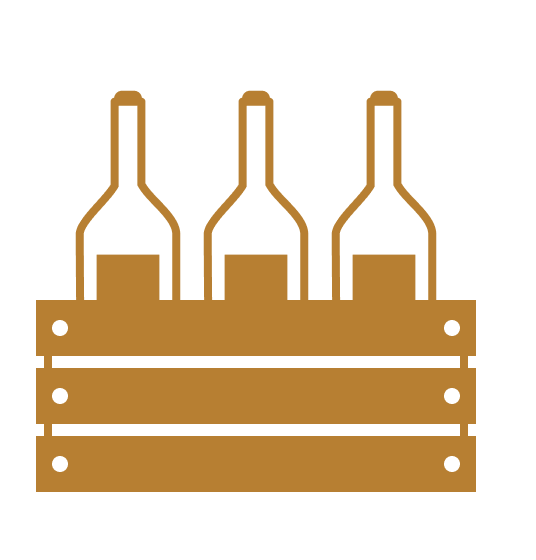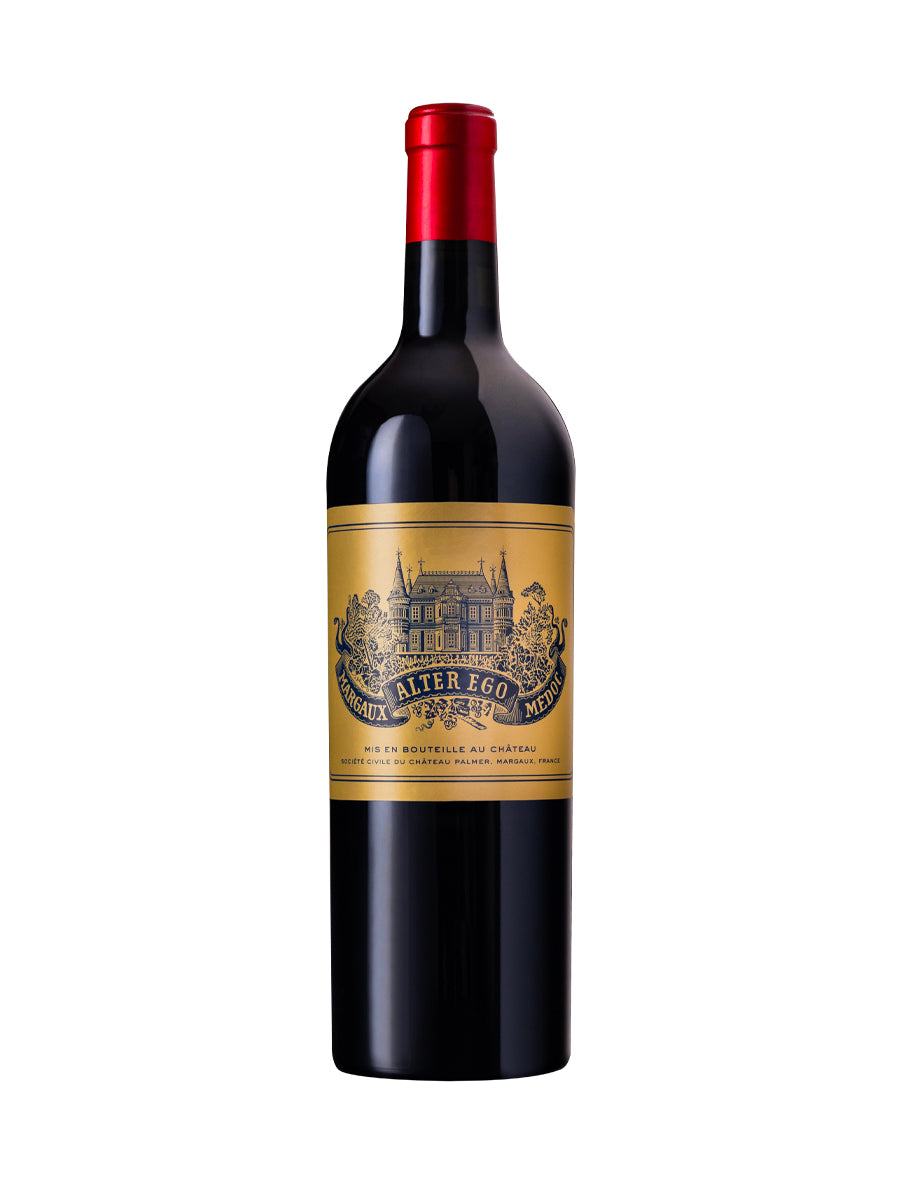
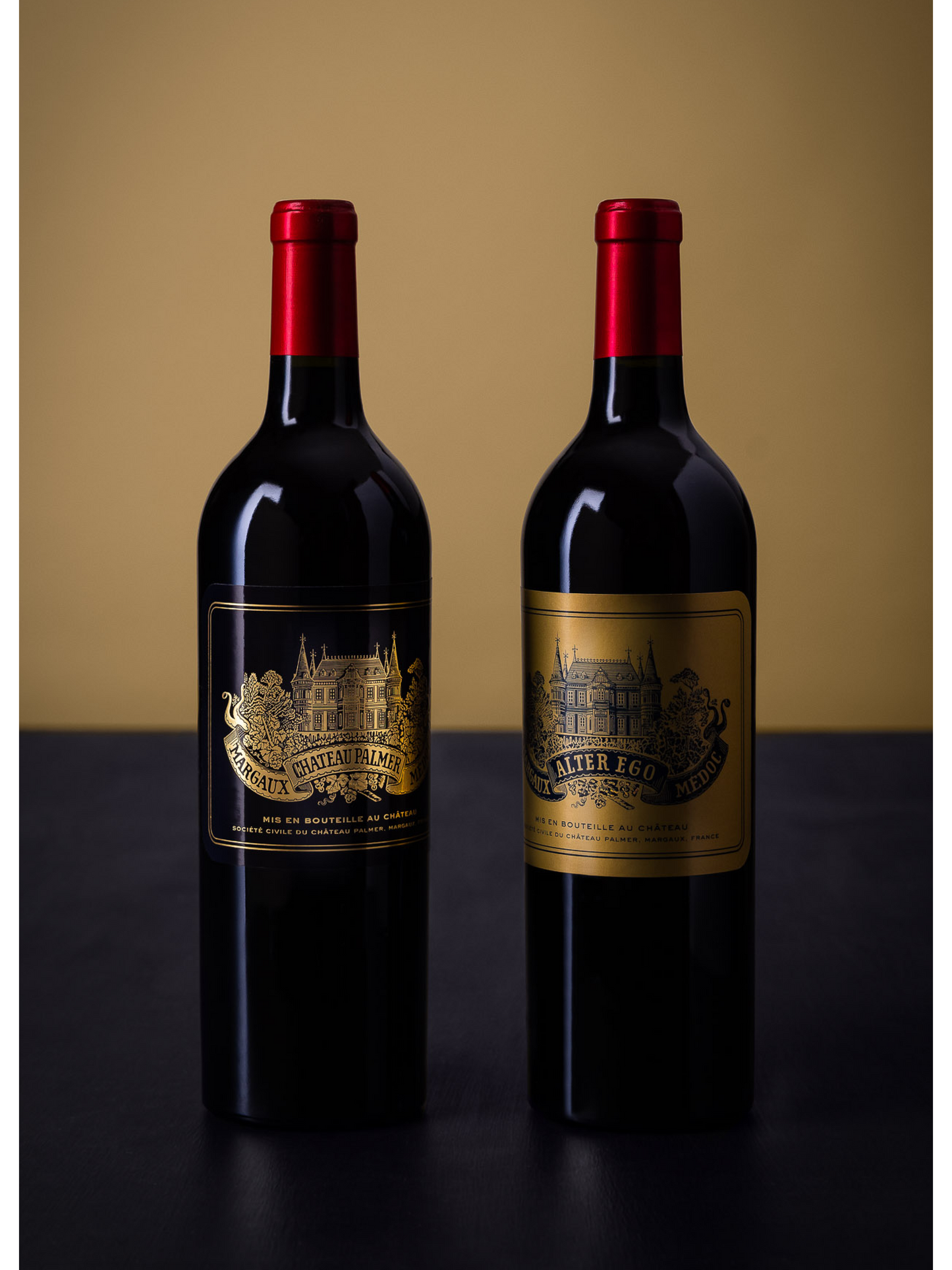
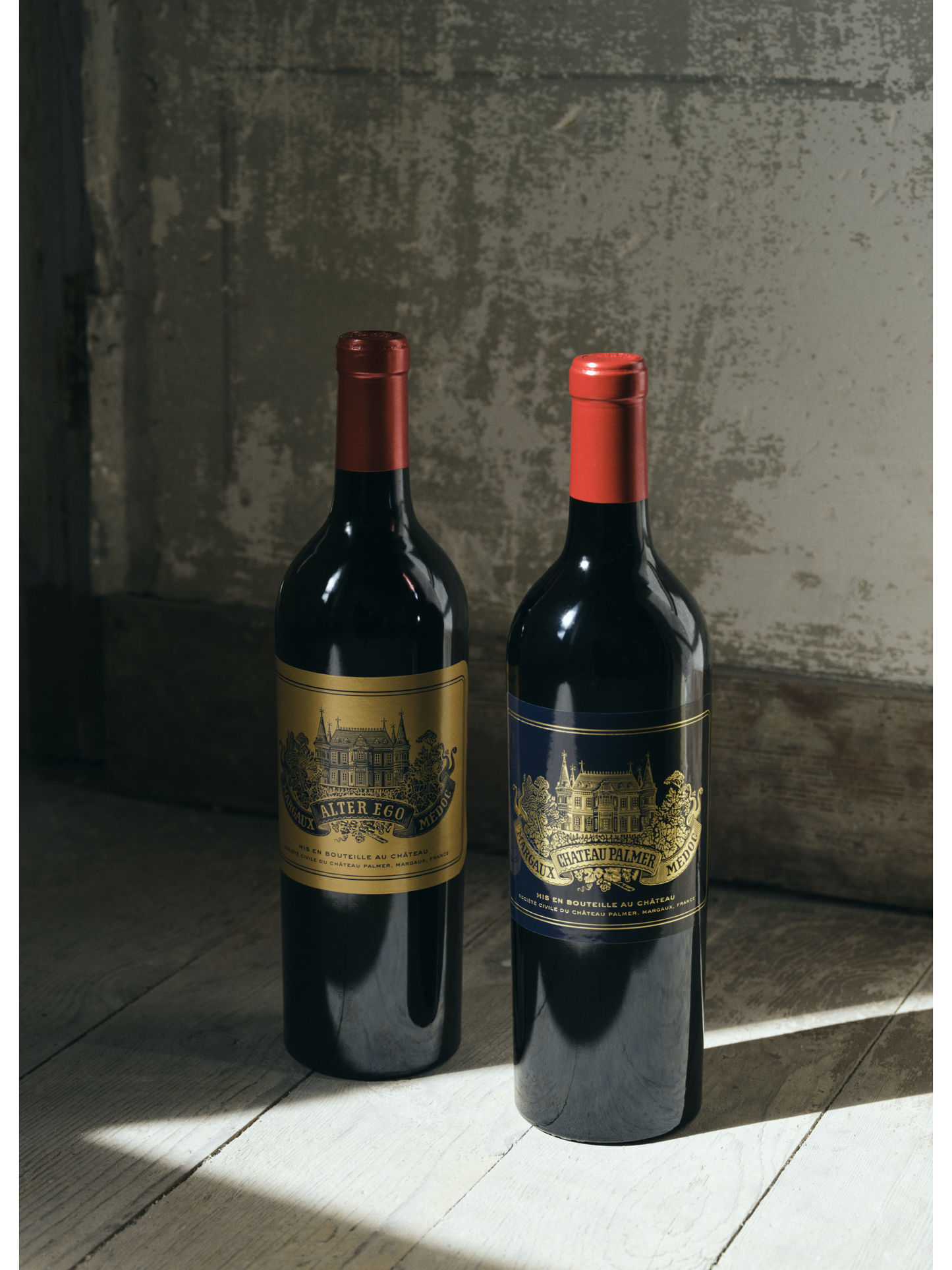
ALTER EGO DE PALMER, 2021
Détail du vignoble
| AGRICULTURE | Organic & biodynamic |
| GRAPE VARIETIES | Merlot, cabernet sauvignon, petit verdot |
| VINEYARD SURFACE AREA | 55 hectares |
| ANNUAL PRODUCITON | 100,000 bottles |
| HARVEST | Manual |
| SOIL | Gravelly-sandy soil & gravelly-clayey subsoil |
Histoire et anecdotes
The English general, Charles Palmer acquired the estate in 1814 and gave it his name in the 1830s. The Pereire brothers, influential bankers, bought Château Palmer in 1853, just before being classified as Troisième Cru in 1855. They built the emblematic château we all know today.
In 1938, the estate was bought by four great families, wine merchants from Bordeaux, the Ginestet, the Mihailhen, the Mähler-Besse and the Sichel. The last two families are nowadays the estate’s owners, but it has been run by Thomas Duroux, an agricultural engineer and oenologist, since 2004.

Caractéristiques
CHARACTERISTICS
| CLASSIFICATION | 2nd wine of Château Palmer |
| GRAPE VARIETIES |
32% merlot, 60% cabernet sauvignon, 8% petit verdot |
| 2021 VINTAGE |
Château Palmer expresses itself on the 2021 vintage " Alter Ego 2021, more marked by the Cabernet Sauvignon than in previous vintages, magnificently reflects the essence of the Margaux appellation, between subtlety and aromatic persistence. Influenced by an Atlantic vintage, it fully respects its terroir, revealing a fine grain and a persistence in the mouth that hints at its potential." |
| WINEGROWING | The winter was mild and the spring frosts in April and May were well contained. Flowering started in a context of hot and dry weather and two weeks later than in 2020. From June to mid-August, rain accelerated vegetative development and also the pressure of mildew until the end of veraison. At the end of August, a dry climate set in for four weeks allowing a good ripening of the berries. The Merlot harvest started on September 24 and the harvest ended on October 15 with the end of the Cabernet harvest. |
| WINEMAKING |
A double sorting of the berries is made, in the vineyard and in the cellar. According to the parcels and the grape varieties, the batches are distributed in 54 stainless steel truncated-cone vats for fermentation. Afterwards, numerous tasting sessions and blending sessions allow us to determine which batch will become the grand vin or the second wine. The wine is aged for 20 months in oak barrels of which 50 to 60% are new. |
| FORMAT | 75 CL |


